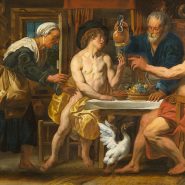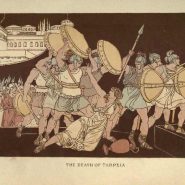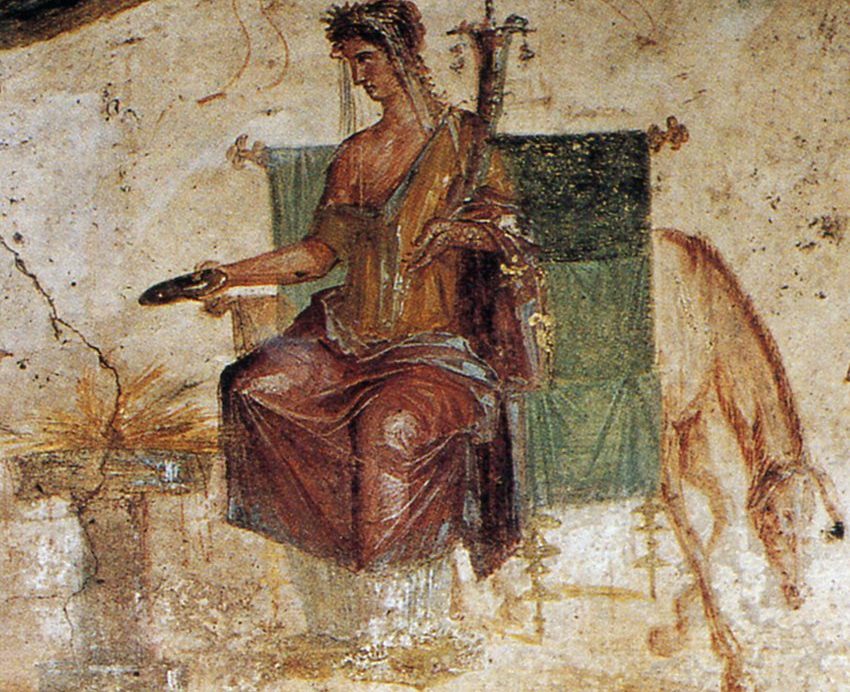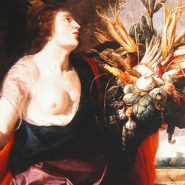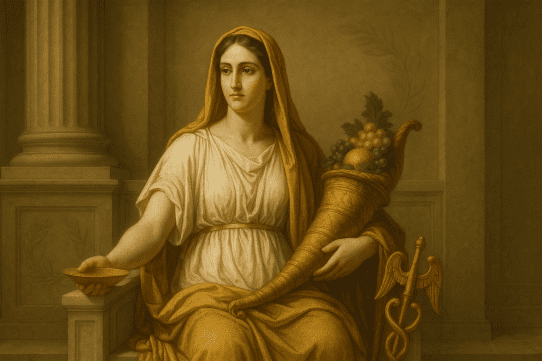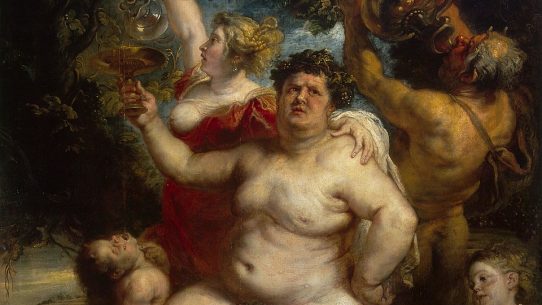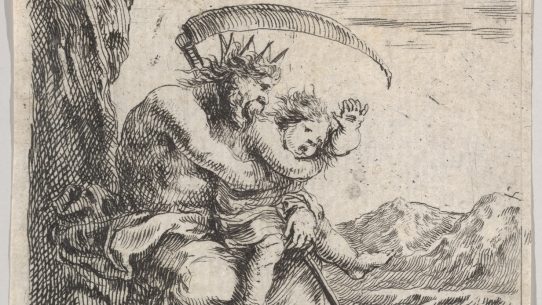Vesta, the gentle goddess of the hearth, home, and family, was one of the most sacred deities in Roman religion. She embodied the flame that warmed every household and bound communities together through shared devotion.
To the Romans, Vesta was not a distant celestial power but a quiet, ever-present force — the living spirit of domestic peace and civic unity. Her eternal fire burned at the heart of Rome itself, symbolizing the endurance of the state and the sanctity of home life.
Through her, Romans honored purity, duty, and the sacred balance of family and nation.
Name and Origin
The name “Vesta” is linked to the Indo-European root *wes*, meaning “to dwell” or “to burn.” Her worship predated the founding of Rome and derived from ancient Italic and Indo-European traditions that revered the household fire as divine.
Later, the Romans associated her with the Greek goddess Hestia, though Vesta’s character remained distinct. Where Hestia symbolized quiet domesticity, Vesta embodied Rome’s collective spirit — the unity of home and state.
Her sacred flame, tended by priestesses known as the Vestal Virgins, represented both divine protection and moral order.
Attributes and Symbols
Vesta was rarely depicted in human form, for her essence was the flame itself. When portrayed, she appeared as a modestly veiled woman, serene and composed, holding a lamp or a bowl of fire.
Her symbols included the hearth, the fire, and the round temple — all circular to represent continuity and wholeness. The color white, signifying purity, was sacred to her, as were offerings of salt and grain.
In her simplicity, Vesta reflected the Roman virtues of modesty, stability, and devotion to duty — qualities considered the foundation of both family and empire.
Family and Relationships
Vesta was the daughter of Saturn and Ops, and sister to Jupiter, Juno, Neptune, Ceres, and Pluto.
Though courted by Apollo and Neptune, she chose to remain a virgin, dedicating herself to peace and service. Her vow of chastity symbolized the inviolability of the hearth — untouched by passion, yet central to life. This purity extended to her priestesses, the Vestal Virgins, whose sacred duty was to guard the flame of Rome.
Unlike other deities, Vesta’s relationships were not defined by romance or rivalry but by constancy and care — the quiet strength that sustains civilization.
Myths and Stories
Vesta’s mythology was less dramatic than that of other gods, yet her presence was deeply woven into Roman life.
One story tells how she once saved the city from destruction when her sacred fire threatened to go out. A Vestal Virgin, seeing the embers dying, prayed and threw her garment upon them, rekindling the flame. This act of devotion became legendary, symbolizing the idea that purity and sacrifice preserve the strength of Rome.
Another tale recounts that Vesta granted hospitality to the god Priapus, who, in turn, attempted to dishonor her. A donkey’s bray startled him, saving her from violation. In gratitude, donkeys were thereafter honored during her festivals as protectors of the hearth.
Domains and Powers
Vesta ruled over the hearth, the home, and all forms of communal and domestic stability. Her fire represented both the warmth of family life and the divine spirit of Rome.
Every Roman household maintained a hearth fire dedicated to her, and each new fire was lit from her eternal flame in the Temple of Vesta. Her power extended to the moral and spiritual foundations of the state, for to extinguish her fire was considered a grave omen.
She governed not through might or passion but through endurance, embodying the strength found in constancy and virtue.
Philosophy and Moral Influence
Philosophers and statesmen saw in Vesta the highest expression of civic and personal duty. She symbolized inner order — the flame of conscience that guides human behavior.
Her cult taught Romans that the home was the heart of moral life and that maintaining its sanctity ensured the stability of the empire. Stoic thinkers interpreted her as the divine principle of harmony, ever steady amidst change.
Through Vesta, the Romans honored the idea that purity of spirit sustains not only the family but the entire community.
Temples and Worship
Vesta’s worship centered on her round temple in the Roman Forum, where the eternal flame was tended by six Vestal Virgins chosen as children from noble families.
The Vestals served for thirty years, sworn to chastity and obedience, their lives dedicated to the goddess. If the flame ever went out, it was believed that disaster would befall Rome.
Each year on June 9, the festival of the Vestalia celebrated her with offerings of bread, salt, and flowers. During this time, her temple was opened to women, who brought food to bless their homes. Her rites were simple yet solemn, reminding citizens that divine order began with the smallest acts of care.
Legacy and Cultural Influence
Vesta’s influence outlasted pagan Rome, transforming into later traditions of the sacred hearth and domestic devotion. The idea of a household shrine — a place of warmth and unity — can be traced to her worship.
Her legacy also endured in the image of the pure and devoted woman, a moral ideal central to Roman family life. In modern language, words such as “investiture” and “devotion” still carry echoes of her sanctity.
Though her flame was extinguished with the fall of Rome, her spirit — of loyalty, peace, and enduring warmth — remains a universal symbol of home.
Unique Traditions and Notes
The Vestal Virgins enjoyed privileges rare for Roman women: they could own property, make wills, and free prisoners by mere touch. Their purity was seen as vital to Rome’s fate, and any violation of their vows was punished by burial alive.
Despite the severity, their office was one of honor, and their presence at ceremonies symbolized divine protection. In private homes, small altars to Vesta ensured the goddess’s watchful care over family and fire.
Through her worship, the Romans affirmed that stability and sanctity began not in temples of stone, but in the hearths that burned within every household.
Adapted from public-domain materials, including Project Gutenberg and Wikisource.
